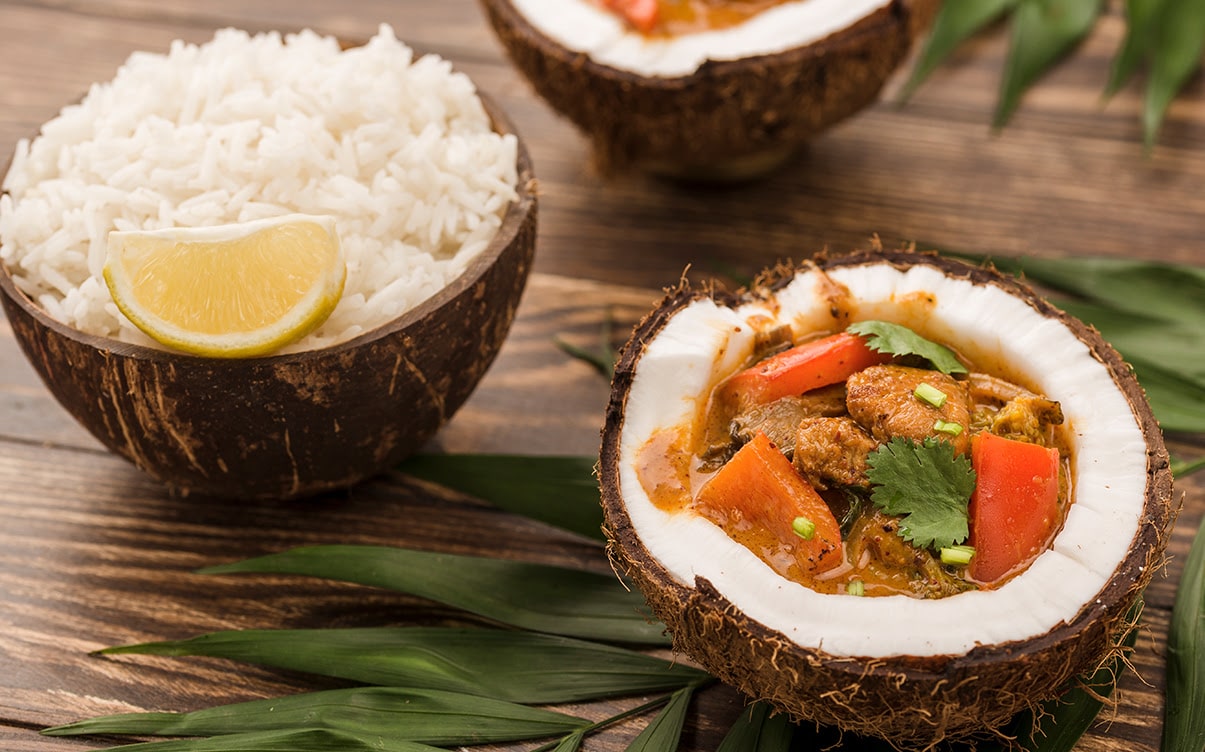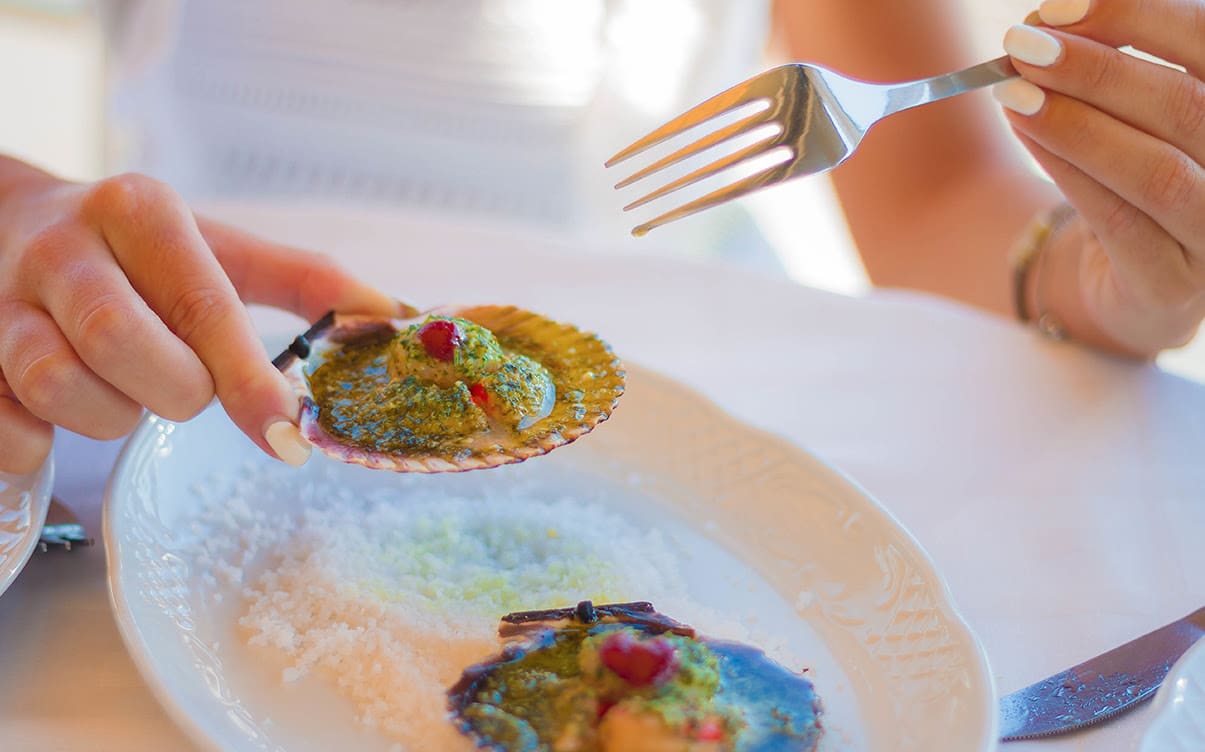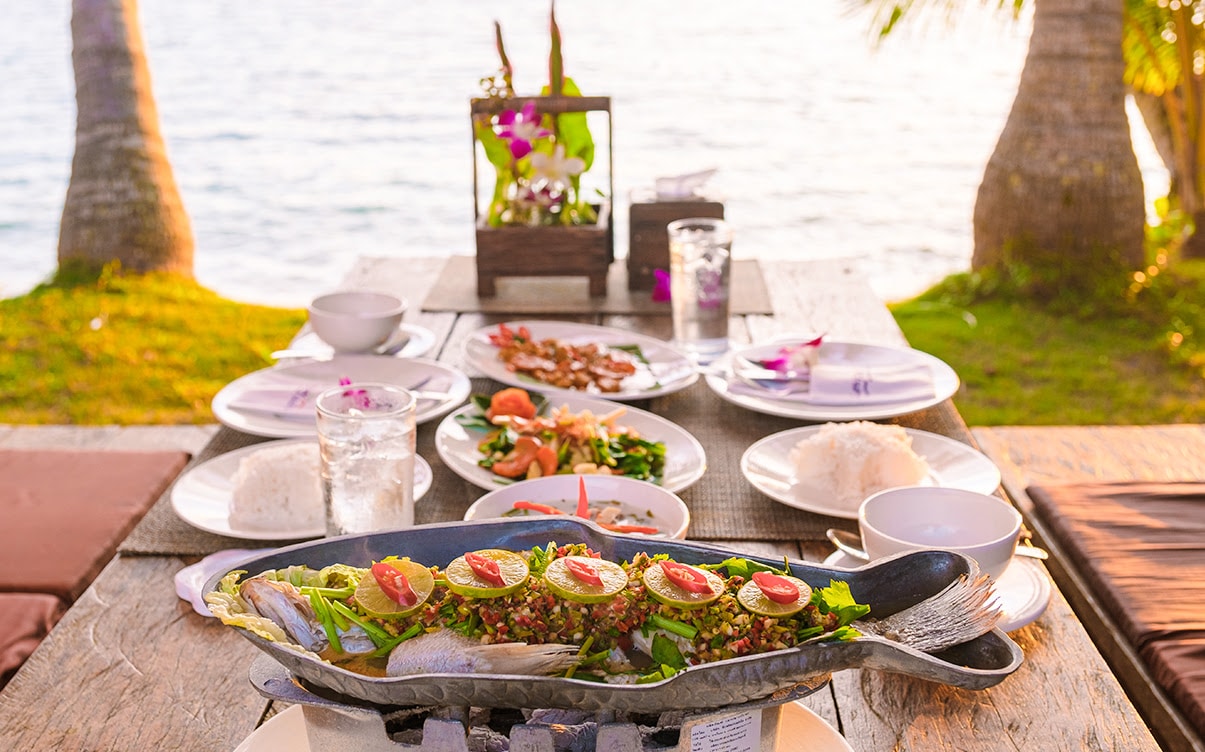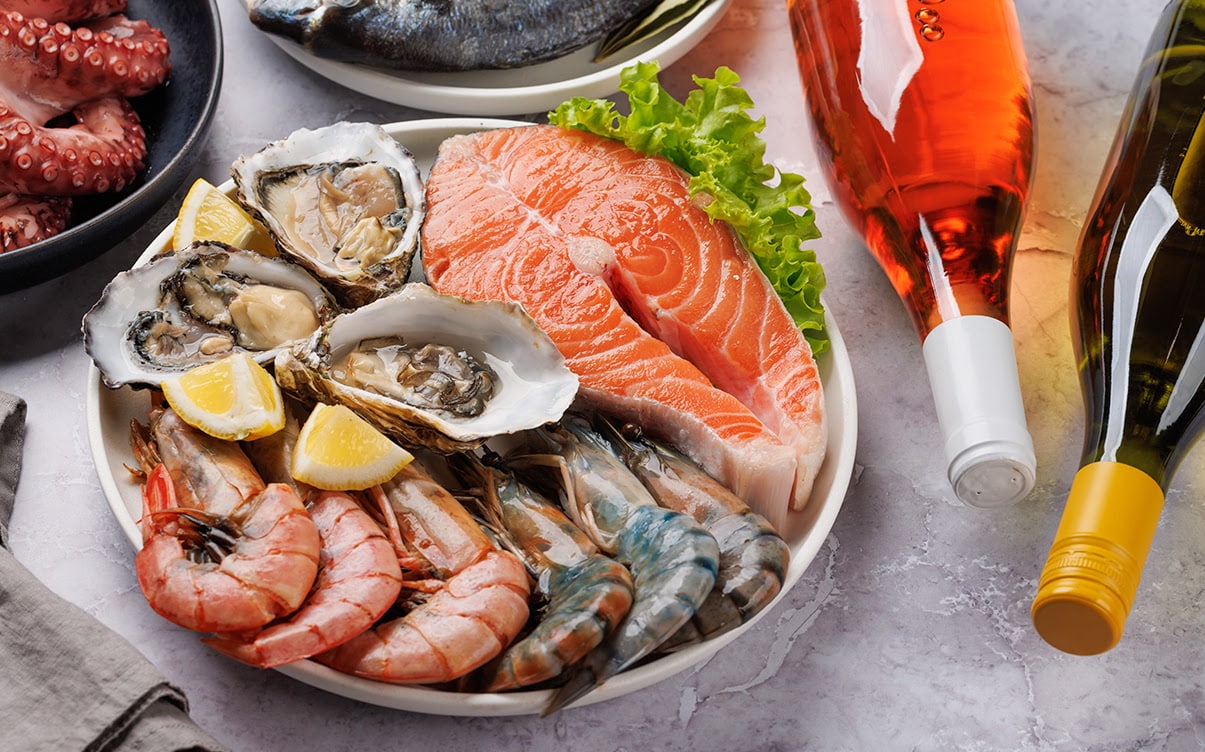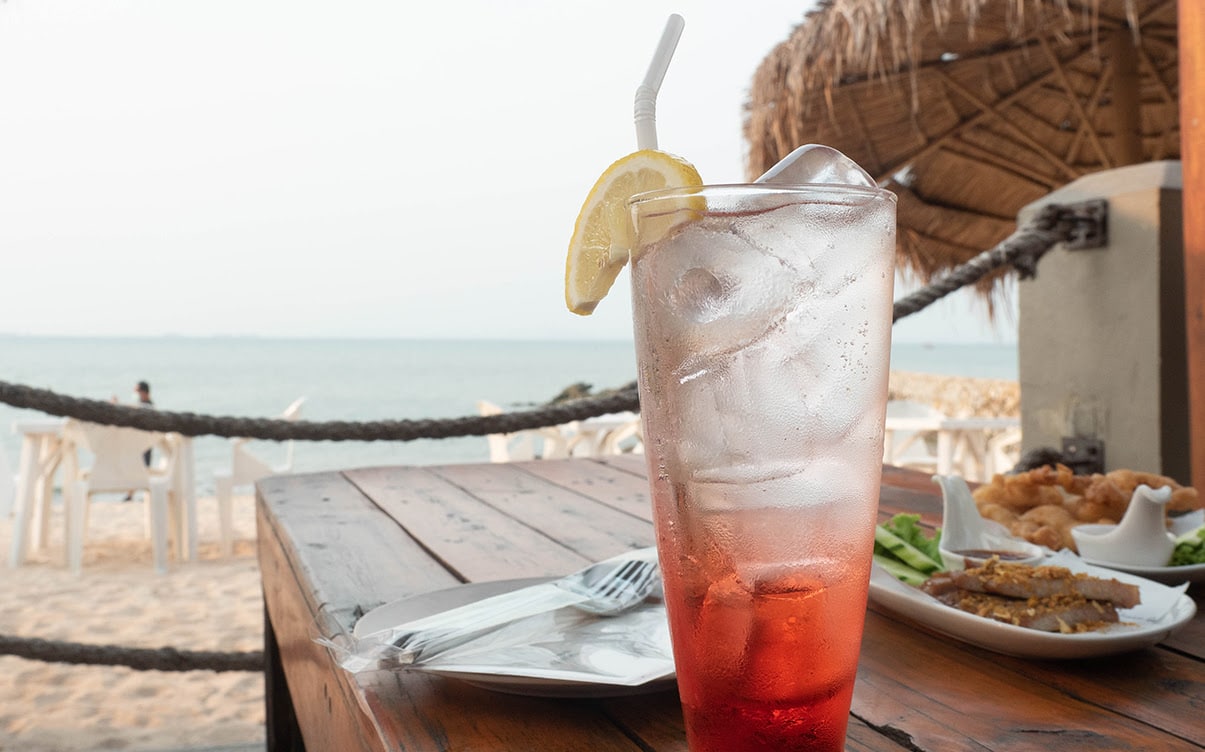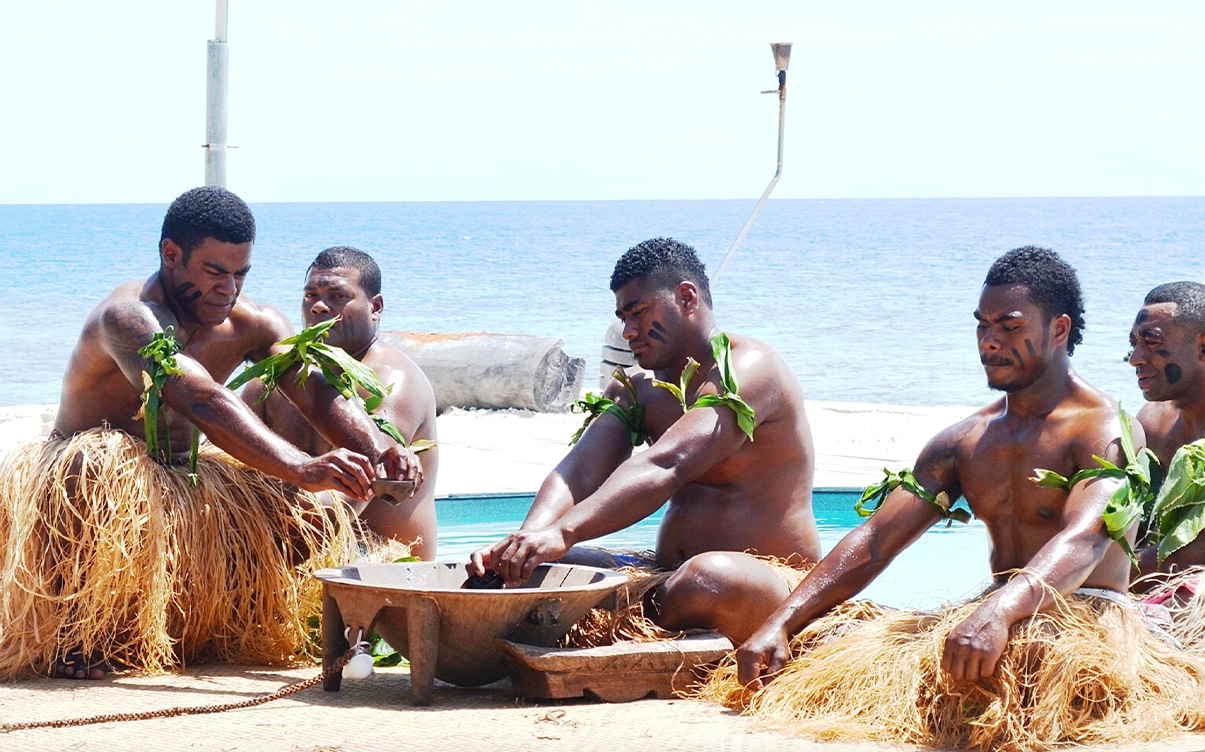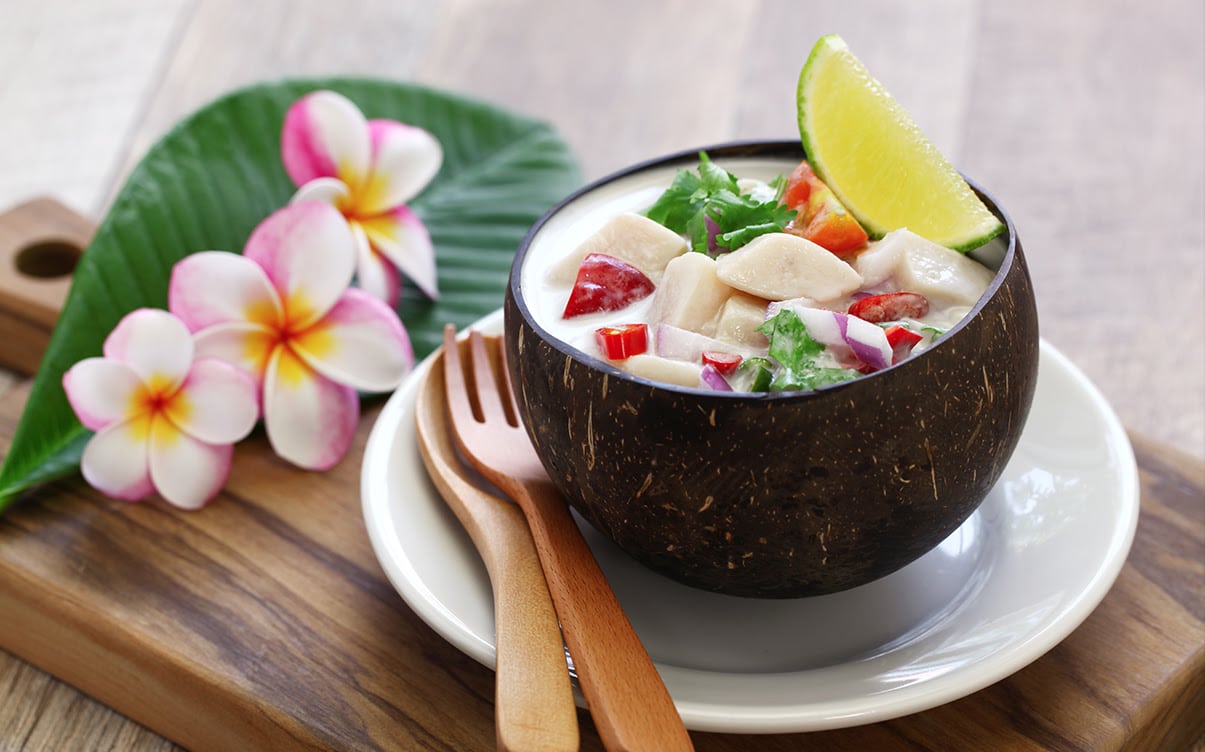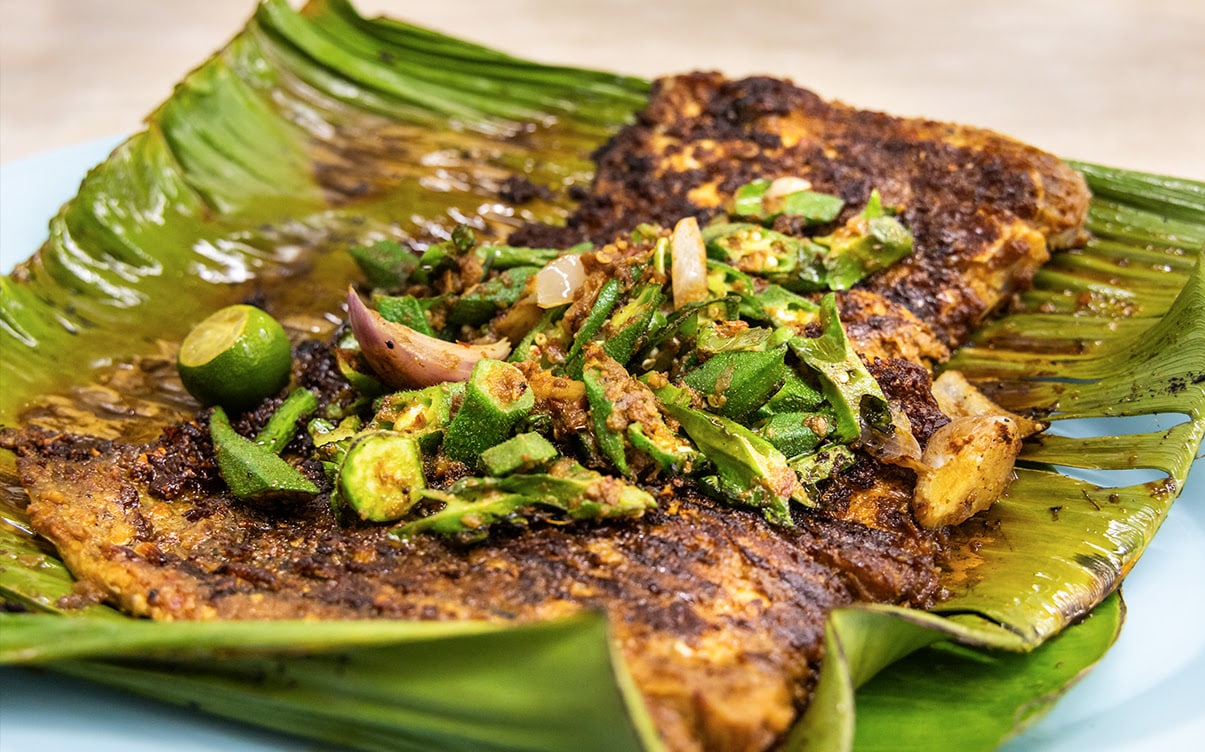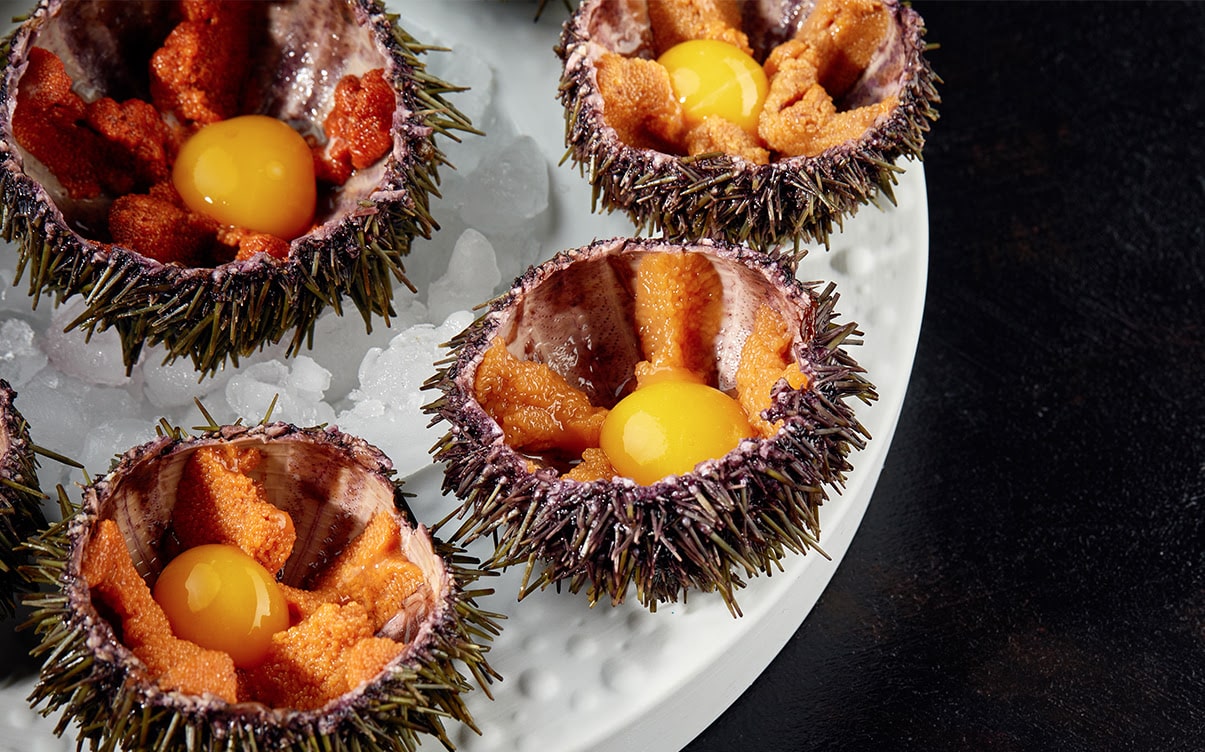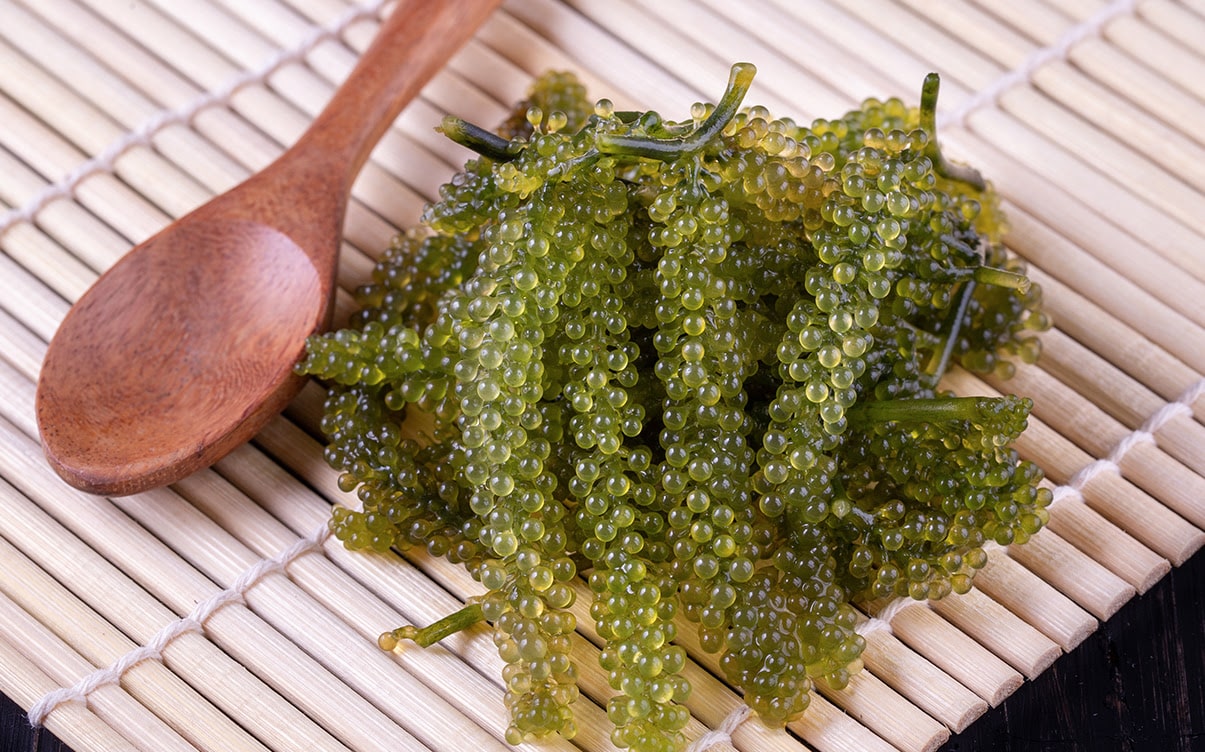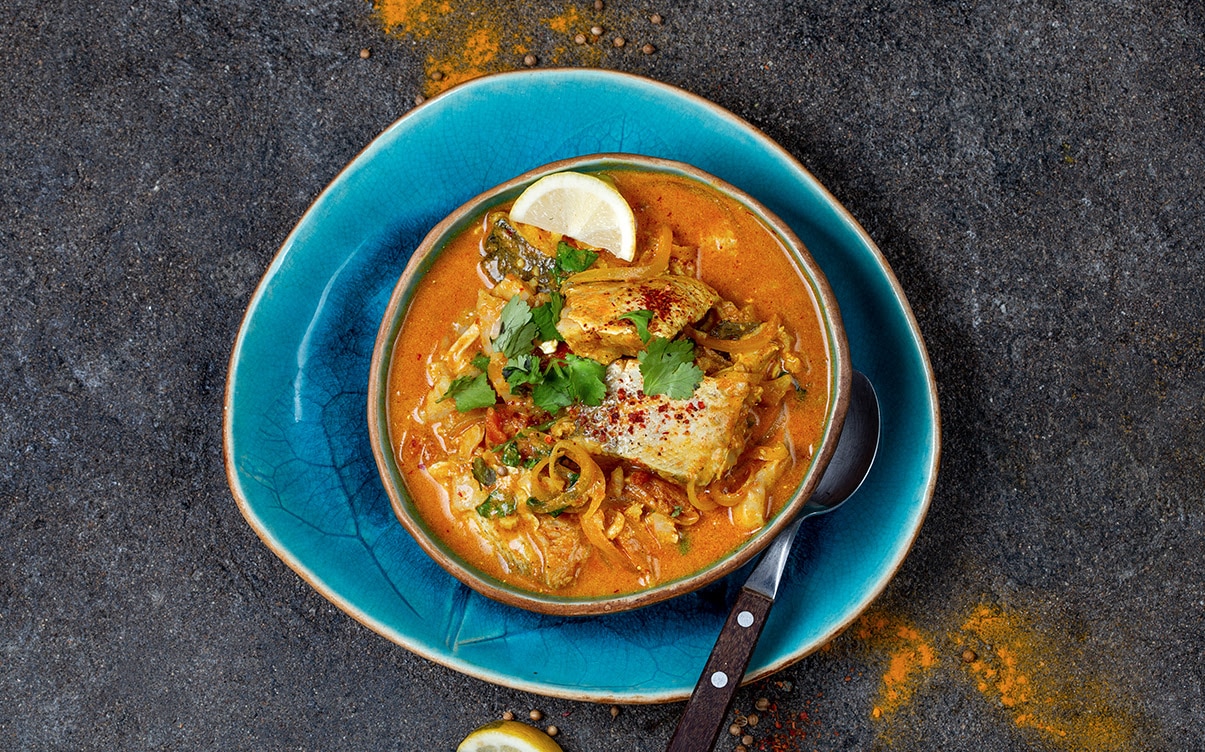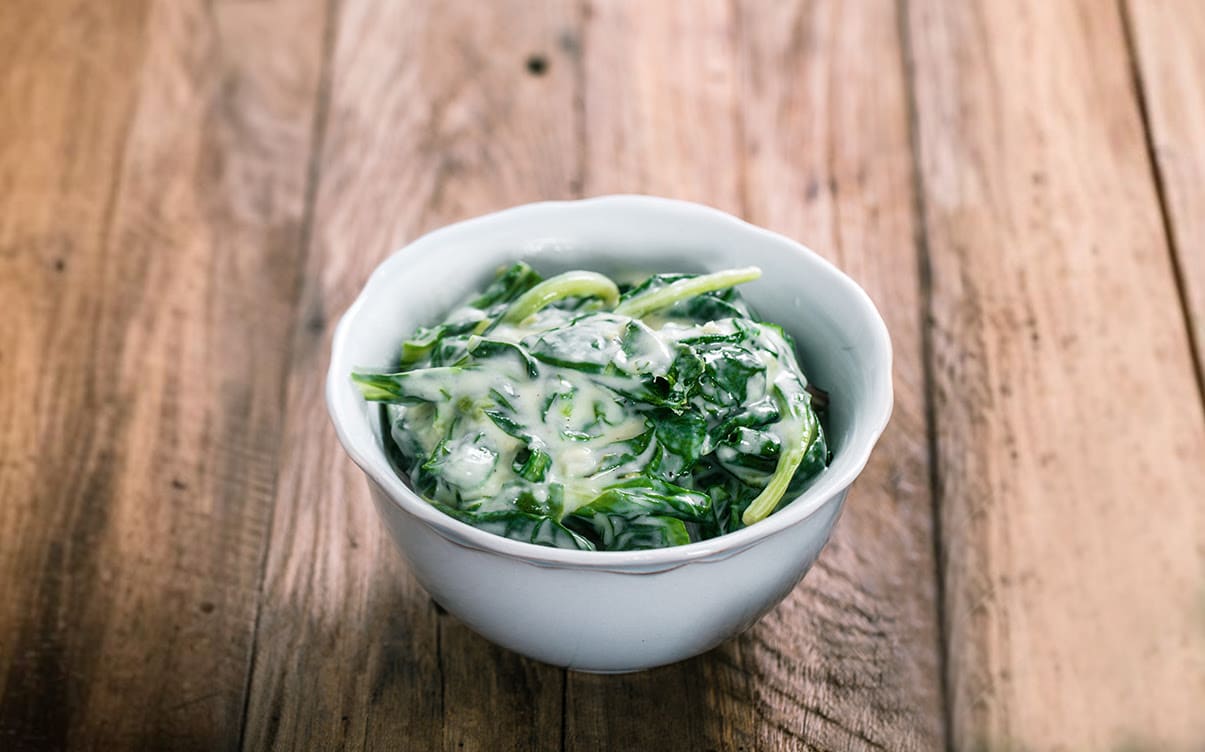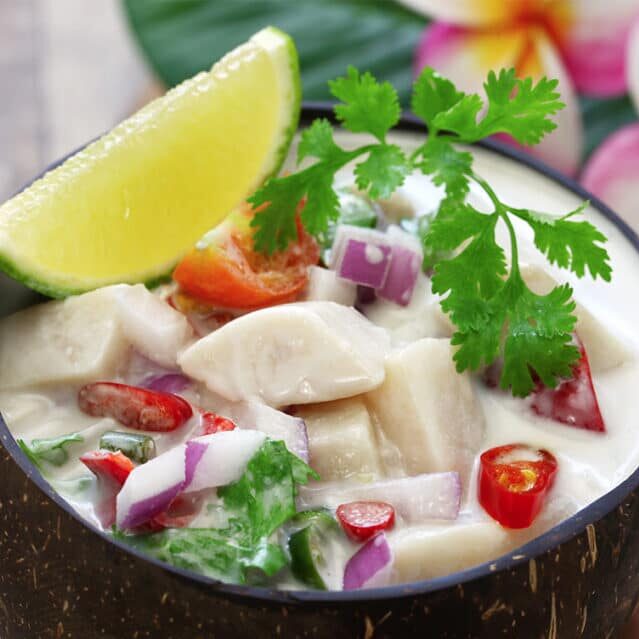Local Fiji Foods You Have to Try (and Where to Find Them)
Disclaimer: This post may contain affiliate links. Please see our Disclosure Policy and Advertiser Disclosure for details.
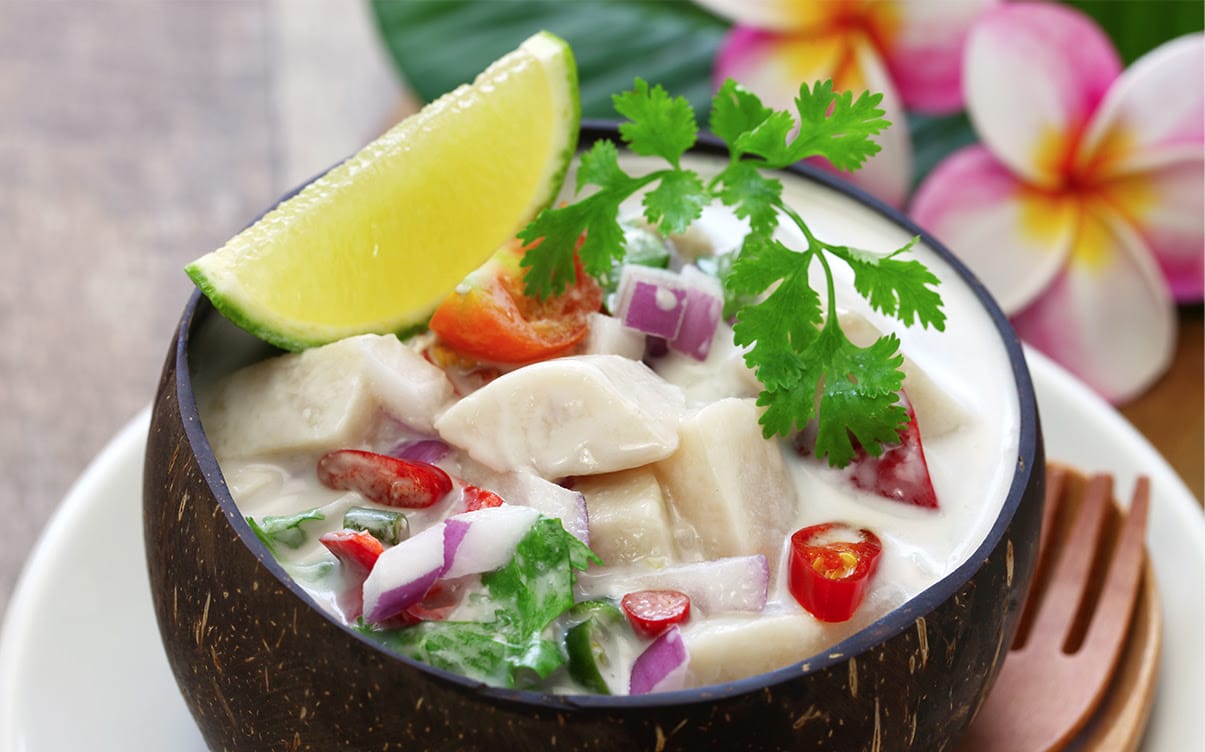
Some people travel the world just to see the sights, immerse themselves in the culture, and have new experiences.
Some people travel with a specific goal in mind, like hiking the most famous nature trails, visiting the UNESCO World Heritage sites, or taking pictures alongside famous statues.
Some people are motivated by something a little more primal. Something intimately related to each and every one of our lives. Something we can’t live without, but we can endlessly experience anew everywhere we go.
Food.
Culinary tourism, also known as gastronomic tourism or simply food tourism, is the practice of traveling the world with the explicit goal of trying new foods, experiencing new food traditions, and seeing a culture through the lens of their meals.
Some people do this casually, just trying new things on the menu when they travel. Others dedicate a lot of thought and analysis to it, thinking about the overall culture, how history and colonization and the climate all impact the food in the region, and thinking deeply about how interconnected, and yet incredibly distinct, every culture is.
We’re not food bloggers, but we do enjoy ourselves some local delicacies when we travel. We’re not the kind to stick to the regional McDonald’s equivalent. So, while you might not view us as authorities in food around the world, you can at least trust us when we say that there are delights to be found everywhere you go.
Fiji is one such possible destination. Out of all of the places you can visit around the world, the archipelago of Fiji is one of them. What’s special about Fijian food, and what should you try when you visit?
The Origins of Fiji’s Food Culture
Fiji’s food culture stretches all the way back to the initial settlement of the islands by the Melanesian people, who broadly occupy a large oceanic area stretching from New Guinea to Fiji itself. People have been eating and enjoying food there for over 5,000 years, though, of course, there have been many changes in ingredients, traditions, and technology in those millennia.
As an archipelago, it stands to reason that a significant influence on Fiji’s food culture is the ocean itself. Many foods and dishes have come from what can be extracted from the surrounding oceans, and what grows on the tropical islands dotting the area.
Staple ingredients for dishes in Fiji include:
- Rice, which serves as the staple grain for significant portions of the world
- Sweet potatoes, likely brought to the area over 1,000 years ago
- Taro, a similar root vegetable also brought to the islands
- Coconuts, the tropical staple found around the world
- Cassava, the starchy root beloved in Brazil and beyond
- Breadfruit, a fruit similar to Jackfruit, which arrived with the Melanesians
- Fish, of course!
What’s truly interesting about Fiji’s food culture is not just this set of ingredients or the traditional Fijian aboriginal traditions; it’s how those traditions have been influenced by successive waves of colonization and settlement in the more recent centuries.
Today, around 40% of Fiji’s population is of Indian descent. This is reflected in the architecture, the temples and shrines that dot the islands, and, of course, the food. Roti and Naan are common, and the spices of curries waft in the air. The Indian Fijian residents certainly love their spice, just like their ancestors in Mumbai, but not everything on the menus will be spicy, so there’s plenty of variety, even for those of you who aren’t fans of the heat inside and out.
There’s also a relatively small but influential ethnically Chinese population, which is reflected in the density of Chinese restaurants in Fiji’s cities. Keep in mind that this is more likely to be Chinese Chinese, not American Chinese, which can be very different.
So, modern Fijian food is a combination of traditional islander food, Indian influences, a dash of Chinese, and of course hints of food brought from British colonization, American global influence, tourist preferences, and more. In short: utterly unique!
What to Do and What to Avoid
If you want to make your culinary journey through Fiji’s food culture the best possible experience, there are some tips you should consider, both in things to do, and in things to avoid.
1: Keep an open mind.
This is generally good advice for anywhere in the world, not just in Fiji.
Keeping an open mind, being willing to try new things, and experience new ingredients, new preparations, and new kinds of food will go a long way towards making your experience a success.
2: Avoid the resort food if you can.
An unfortunate reality of Fiji is that the food provided by resorts is often sub-par and, more importantly, frequently unhygienic and even contaminated. Food poisoning is common with resort-bound tourists.
Food outside of the resorts is often better, but things like open buffets in Fijian resorts are almost astonishingly bad in terms of contamination.
3: Avoid anything raw.
This is generally good practice just about everywhere in the world unless you’re in a location that is especially known for preparation and care in creating their meals. In places like Fiji, raw foods are often enjoyed just fine by locals, but for those of us who travel and don’t have the constitution for it, it can be devastating.
Similarly, if you order a hot food and it’s cool or cold, or you order something meant to be cold and it’s room temperature, don’t risk it. There simply aren’t the same level of food safety rules and customs you might be used to, and it’s potentially dangerous to eat food that has been in the “danger zone” for too long.
4: Don’t get ice in your drinks.
“Don’t drink the water” is a common refrain and something we world travelers are well used to. Even when traveling to places we know have sanitation, unfamiliar components of local water can prove irritating to the digestive system.
In places without sanitation or with unclear sanitation, like Fiji, it’s better not to risk it. Avoid ice in drinks, and go for bottled water when you can.
5: Accept hospitality with caution.
The people in Fiji are very friendly – so much so that we make special note of it in our post about learning basic Fijian words and phrases – and there’s a good chance if you’re visiting villages and traveling outside of the main city centers and resorts, you’ll be invited to share a meal. Hospitality is a big part of Fijian culture, and most locals are more than happy to prepare a family or island staple for you to try.
Just be aware that, like all people everywhere, the actual culinary abilities of individual people can vary. We definitely advise accepting if you feel comfortable doing so, but exercise caution with the food you’re presented with. You’ll probably be fine, but if you’re not, it can be bad. Back in 2012, there was a woman who tried a local dish that hadn’t been prepared properly and ended up sick for years after. Obviously, this was a decade ago, and it’s still the biggest example, so it’s not like this kind of thing happens all the time, but it’s always good to know what’s being made and what risks it might entail.
The Kava Ceremony
In Fiji, there’s a particular beverage that you may be invited to enjoy as part of a ceremony. It’s called Kava, or Yaqona, or even just Grog. It’s mildly narcotic and mildly sedative, used in an ancient ceremonial ritual and widely touted as a Thing To Do when visiting Fiji. The ceremony is meant to mark the coming together of two groups, whether it’s something more like a wedding or something more like a visitor.
The Kava ceremony is taken quite seriously, and you will probably be given a few ground rules to follow, such as:
- Bring a Kava root from a market to present to your host.
- If your group contains multiple people, the eldest man in the group presents the root.
- Dress modestly. This really goes for your whole time in the country, honestly.
- Remain seated during the ceremony.
- Men drink first, starting with the eldest man; women drink after.
The Kava ceremony is most commonly seen as an introduction to a village; it’s something you do as a sort of rite of passage, after which you’re ceremonially “joined” to the village and are free to explore.
One thing to be cautious of is products calling themselves Kava that you buy at stores. Some are, some aren’t, some are strong, some aren’t, and some have been found to be toxic. We don’t recommend it; partake in the ceremony, but don’t bring the ceremony home with you.
The Best Dishes to Try when Visiting Fiji
So, what actual foods should you prioritize in Fiji?
Kokoda
Kokoda is the Fijian version of ceviche; it’s a raw fish marinated in coconut cream and lime juice, mixed with other ingredients like tomato, onion, and chili, and often served in a half-coconut bowl. The lime juice’s acidity “cooks” the fish just like in a ceviche.
This is definitely a very tasty option, and also one where you definitely want to reserve it for times when you’re eating at a known restaurant so you can be more assured of the freshness of the fish.
Lovo
Lovo is both the name for a kind of food, and a kind of preparation. A Lovo is an earthen oven, made by building a fire, placing stones over top of it, and making meals wrapped in banana leaves to place on the stones to cook.
Lovo feasts tend to be popular in some resorts, in village tours, in cultural excursions, and for special events.
Cawaki
Cawaki is a kind of sea urchin, one of many in the seas surrounding Fiji, but the only one that’s edible.
You can often find it in coastal villages and, of course, the big markets. It’s a bit of a delicacy and certainly worth trying at least once.
Nama
Nama is a kind of seaweed found all around Fiji. It’s unique in appearance, like small beads of liquid, which is why they have the name “sea grapes” as well. They don’t taste like grapes, of course; it’s a lot more like caviar.
Fijian foods often use a bit of nama as a garnish, or mix it with coconut to make a paste called Kora that is used in other recipes.
Suruwa
Suruwa is a local spin on one of the Indian influences: curry!
It’s a fish-based curry often served over rice, and is seasoned with a mixture of familiar spices like garam masala, cumin, and cinnamon, though it’s also quite spicy. It’s also a common wedding food, though you probably won’t be attending a wedding on your tourist visit.
Rourou
Rourou may or may not be appetizing at first glance, depending on your history with one of the most contentious vegetables in American culture: spinach. If you have bitter memories of childhood green masses of slimy canned spinach, you might be initially turned off. But keep an open mind!
Rourou uses taro leaves, coconut milk, onions, garlic, and various spices to create a flavorful and creamy green dish that works perfectly as a side to many of the other foods you’ll find in Fiji.
Vudi Vakalolo
To round things out, why not have dessert? Vudi vakalolo is a fairly simple dessert made from plantains cooked in coconut milk and topped with sugar, cinnamon, cardamom, and sometimes a couple of other spices. It’s served chilled, so you have something sort of like an iced fruit shake or simply spiced fruit in milk. It’s a great way to round out any Fijian meal!
So, what about you; have you ever been to Fiji, and if so, do you have any favorite dishes you had while you were there? Any restaurants in particular you would want to recommend? Whatever your preferences, Fiji is an island full of options, and it’s a great place to spend a vacation. Try new things, see the sights, and enjoy your time on the islands!
You may also enjoy:

